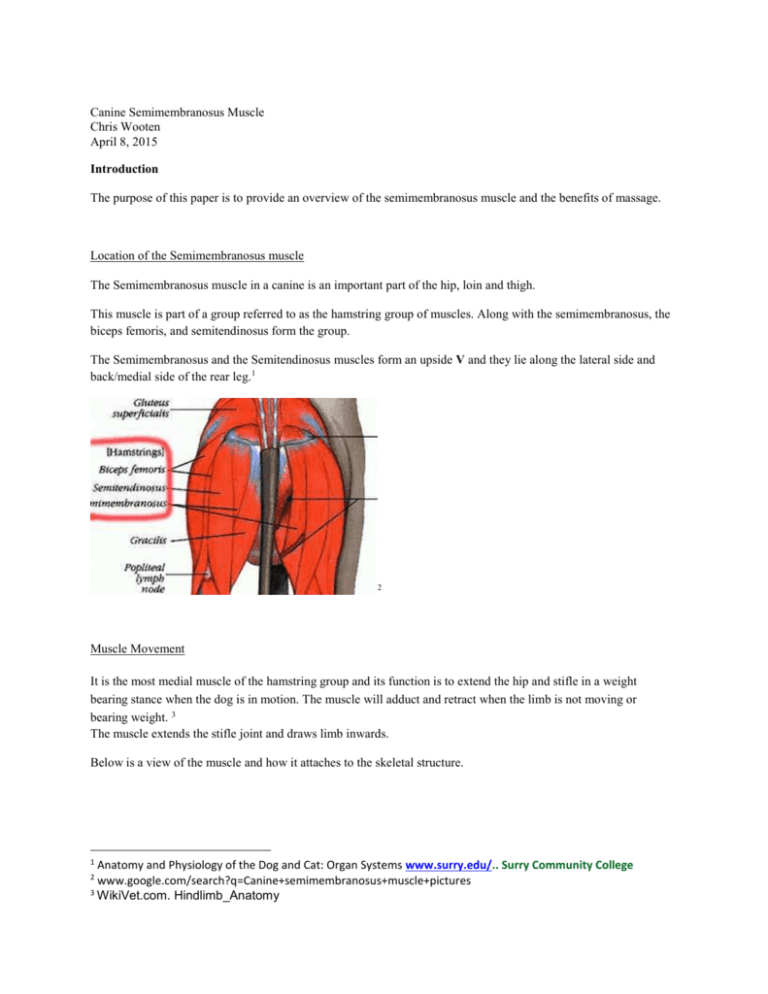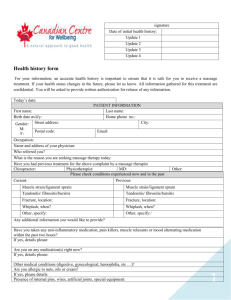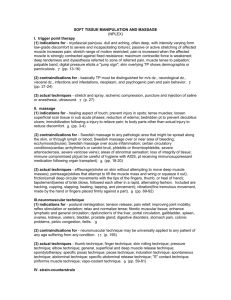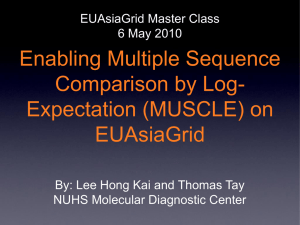The Canine Semimembranosus Muscle
advertisement

Canine Semimembranosus Muscle Chris Wooten April 8, 2015 Introduction The purpose of this paper is to provide an overview of the semimembranosus muscle and the benefits of massage. Location of the Semimembranosus muscle The Semimembranosus muscle in a canine is an important part of the hip, loin and thigh. This muscle is part of a group referred to as the hamstring group of muscles. Along with the semimembranosus, the biceps femoris, and semitendinosus form the group. The Semimembranosus and the Semitendinosus muscles form an upside V and they lie along the lateral side and back/medial side of the rear leg.1 2 Muscle Movement It is the most medial muscle of the hamstring group and its function is to extend the hip and stifle in a weight bearing stance when the dog is in motion. The muscle will adduct and retract when the limb is not moving or bearing weight. 3 The muscle extends the stifle joint and draws limb inwards. Below is a view of the muscle and how it attaches to the skeletal structure. 1 Anatomy and Physiology of the Dog and Cat: Organ Systems www.surry.edu/.. Surry Community College www.google.com/search?q=Canine+semimembranosus+muscle+pictures 3 WikiVet.com. Hindlimb_Anatomy 2 4 Muscle Attachment There are three important elements to muscle attachment: Origin, insertion points, and energy. The origin of the semimembranosus muscle is the vertebral head. 5 The insertion point or the place the bone of a joint and muscle end attaches is the medial condyle of the femur and tibia.6 The energy source or Innervation is the supply of nervous energy or nerve stimulation sent to a body part or muscle. 7 For the semimembranosus muscle the caudal glutal and the tibial nerves stimulates the muscle to action. 8 The Benefits of Massage for the Semimembranosus Muscle In general, massage is essential to the well-being of our canine family members. It assists all body systems to perform optimally by increasing circulation, flexibility and promotes the sense of wellbeing within the dog. 9 Specifically, massage helps to strengthen the body by stimulating the semimembranosus muscle along with the other two muscles that comprise the hamstring group. Massage can increase blood flow to help alleviate pain, reduce edema and buildup of lactic acid. Massage loosens the muscles around joints, which also helps promote ease of movement. 10 Massage can assist with increased muscle tone and use through active resistive and guided position release movements. 4 www.biosphere.com 3D Canine anatomy software wiki.answers.com 6 www.onlineveterinaryanatomy.net 7 WikiVet.com Hind limb - Anatomy and Physiology. www.onlineveterinaryanatomy.net 5 8 http://medical-dictionary.thefreedictionary.com/ Pet Massage for Dogs Foundational Workshop, copyright 2013 by Jonathan Rudinger 10 www.onlineveterinaryanatomy.net 9 Rocking can be used to strengthen the muscle and also increase bone density. Pinch, pull, twist and release is another massage technique that can be used on the hips, stifle and hocks. Frictioning can be used to increase warm the tissues to increase circulation, flexibility, lymphatic drainage.








